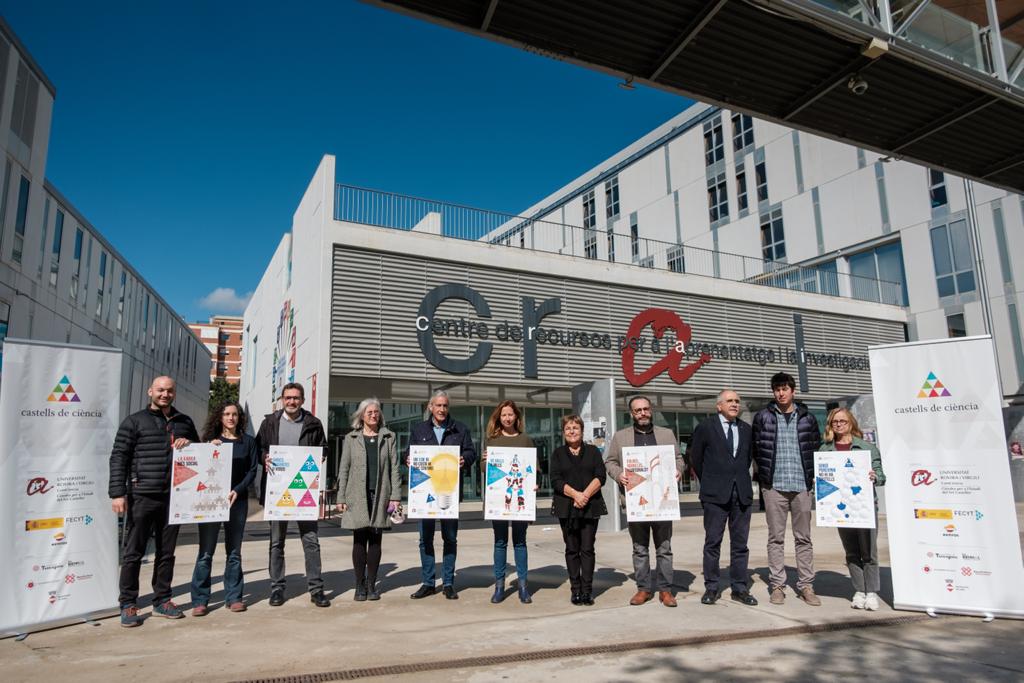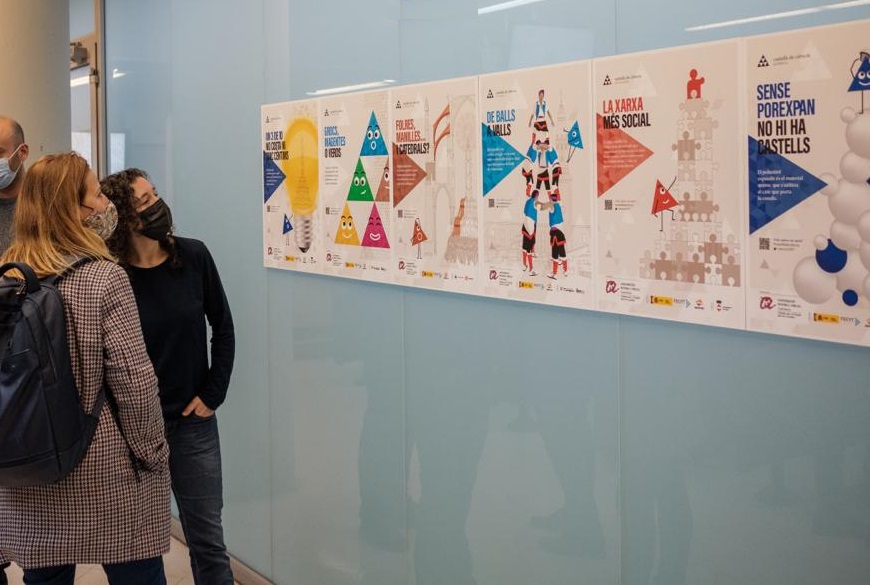05/04/2022
The URV promotes the Towers of Science project, an outreach initiative that discusses human towers from a scientific perspective
The new campaign kicks off by discussing human towers from the perspective of six scientific disciplines. The posters can be seen in the streets of Reus Tarragona and Valls, all towns that are taking part in the project, and there are also informative videos, a series of talks and other activities in the streets and on the days of human tower-building exhibitions. The initiative is also funded by the Spanish Foundation for Science and Technology (FECYT) and the company Repsol

The new campaign kicks off by discussing human towers from the perspective of six scientific disciplines. The posters can be seen in the streets of Reus Tarragona and Valls, all towns that are taking part in the project, and there are also informative videos, a series of talks and other activities in the streets and on the days of human tower-building exhibitions. The initiative is also funded by the Spanish Foundation for Science and Technology (FECYT) and the company Repsol
Human towers from the perspective of chemistry, physics, history, anthropology, architecture and sociology. These are the six disciplines that are the base of Towers of Science, a project that aims to communicate science to the general public by using human tower building, a mass cultural phenomenon with deep roots in the region that was declared Intangible Cultural Heritage of Humanity by UNESCO in 2010. This new project is promoted by the URV’s Science Communication Unit (ComCiència) and the Chair for the Study of Human Tower Building of which the Coordinating Committee of Human Tower Building Teams of Catalonia and the Old Team from Valls are also a part.
To be extended in a second phase, the six articles discuss the potential energy of human towers (physics), the helmet worn by tower builders (chemistry), the origin of human towers (history), Gothic constructions and their parallelism with human towers (architecture), the relationship between human towers and identity (anthropology) and the tower building teams as spaces of social cohesion (sociology).

But the project also does other things. Posters have been designed for each of the areas, and are on display in the streets of Reus, Tarragona and Valls. Through a QR code, the posters provide more general information that can be found on the website with a scientific explanation. This information explains how human towers are connected to the and scientific fields and is also available in Spanish and English. The articles posted are related to each discipline and there are also one-minute scientific videos that illustrate the connection between science and human towers through animated cartoons. The project has been scientifically endorsed by the University’s research staff and tower builders from the different groups that have taken part in the project. URV researcher Núria Ruiz has been the scientific advisor for the project, in which the journalist specialising in tower building, Carles Cortés, has also collaborated.
In addition to the posters, videos and the website, in this first phase a series of talks will be organized during the spring, as well as occasional activities in the streets and squares of the participating cities. Rehearsals will be open to the public and scientific debates held. In the second phase, the project will be extended with more disciplines and new actions, and will include other towns.
The posters will be put up in Reus on 14 March and will be on display during the second half of April and May. In Tarragona the posters will be on display during the month of April and in Valls in May. The councils of these three towns have taken part in the initiative. The project has received funding not only from the University but also from the Spanish Foundation for Science and Technology (Ministry of Science and Innovation) and the company Repsol.
Six researchers at the start of the project
The researchers involved in the first phase of the project were Roger Cabré, a physicist in the Department of Electronic, Electrical and Automation Engineering; Marta Calull, from the Department of Analytical Chemistry and Organic Chemistry; Eduard Jiménez, consultant to the URV group ISOCAC researching into tower building and maritime studies; Albert Samper, from the School of Architecture; Francesc Valls, member of the research group Social & Business Research Laboratory (SBRlab), and Elisa Alegre, from the URV’s Department of Anthropology, Philosophy and Social Work.
